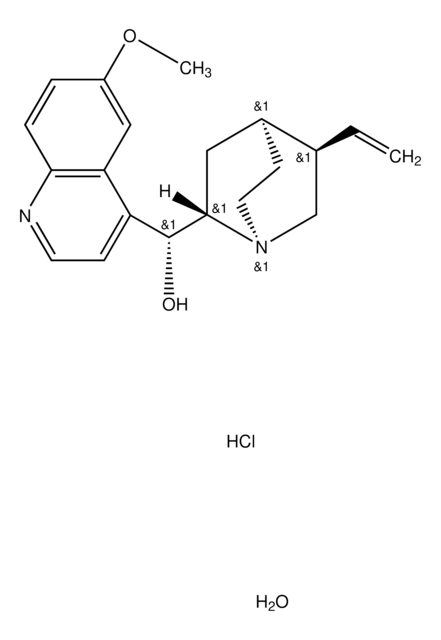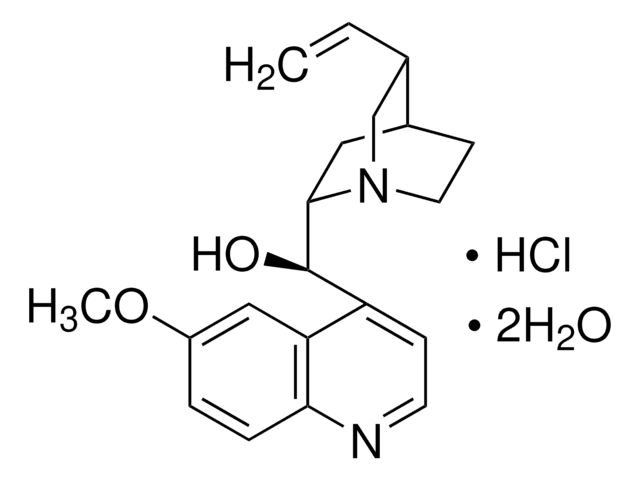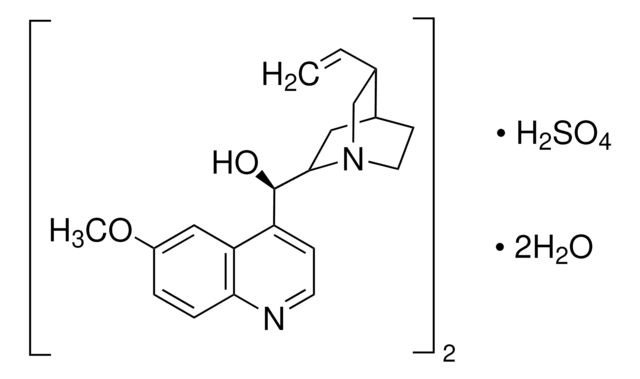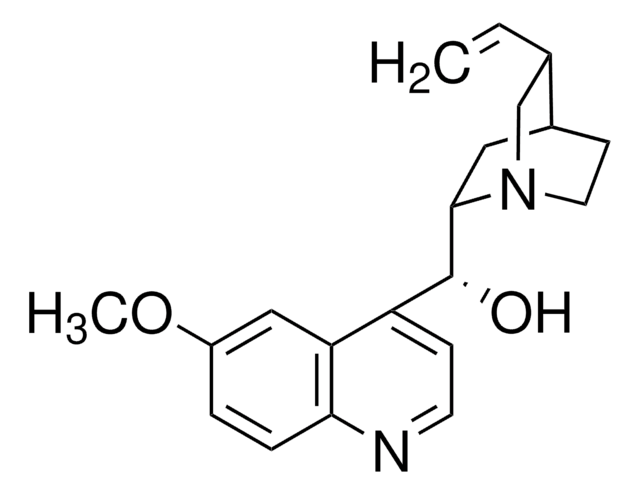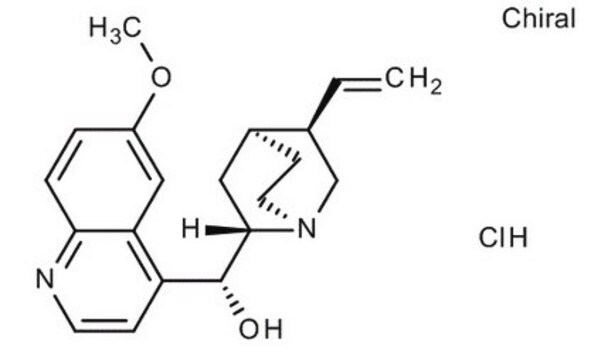22632
Quinine hydrochloride dihydrate
tested according to Ph. Eur.
Sinônimo(s):
Chinini hydrochloridum, (8α, 9R)-6′-Methoxycinchonan-9-ol monohydrochloride dihydrate
About This Item
Produtos recomendados
Agency
USP/NF
tested according to Ph. Eur.
Nível de qualidade
Formulário
solid
solubilidade
water: soluble 0.25 mg in 5 ml
aplicação(ões)
pharmaceutical (small molecule)
cadeia de caracteres SMILES
O.O.Cl.COc1ccc2nccc([C@@H](O)[C@@H]3C[C@@H]4CCN3C[C@@H]4C=C)c2c1
InChI
1S/C20H24N2O2.ClH.2H2O/c1-3-13-12-22-9-7-14(13)10-19(22)20(23)16-6-8-21-18-5-4-15(24-2)11-17(16)18;;;/h3-6,8,11,13-14,19-20,23H,1,7,9-10,12H2,2H3;1H;2*1H2/t13-,14-,19-,20+;;;/m0.../s1
chave InChI
MPQKYZPYCSTMEI-FLZPLBAKSA-N
Procurando produtos similares? Visita Guia de comparação de produtos
Categorias relacionadas
Aplicação
Ações bioquímicas/fisiológicas
Palavra indicadora
Danger
Frases de perigo
Declarações de precaução
Classificações de perigo
Acute Tox. 4 Oral - Resp. Sens. 1 - Skin Sens. 1
Código de classe de armazenamento
11 - Combustible Solids
Classe de risco de água (WGK)
WGK 1
Ponto de fulgor (°F)
Not applicable
Ponto de fulgor (°C)
Not applicable
Equipamento de proteção individual
dust mask type N95 (US), Eyeshields, Faceshields, Gloves
Escolha uma das versões mais recentes:
Já possui este produto?
Encontre a documentação dos produtos que você adquiriu recentemente na biblioteca de documentos.
Os clientes também visualizaram
Nossa equipe de cientistas tem experiência em todas as áreas de pesquisa, incluindo Life Sciences, ciência de materiais, síntese química, cromatografia, química analítica e muitas outras.
Entre em contato com a assistência técnica